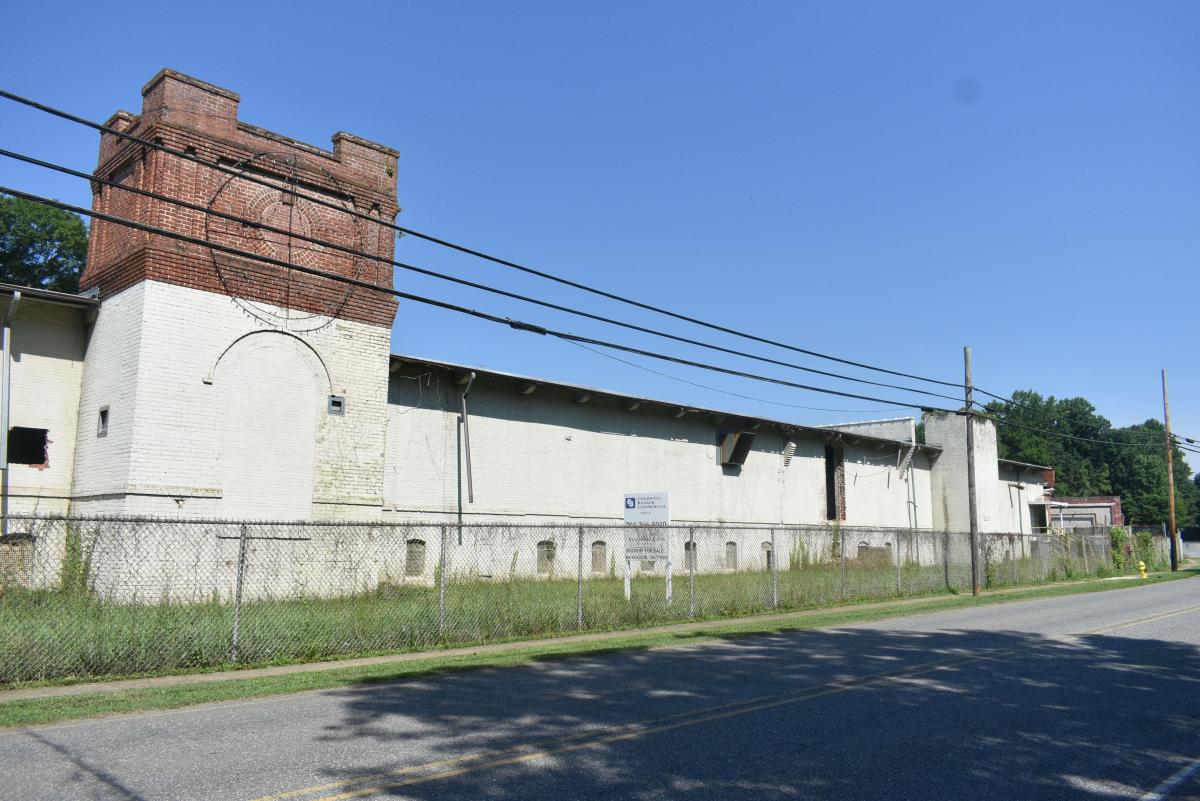Sitting on more than three acres of land at 300 Woodlawn Avenue in Mount Holly, Woodlawn Mill played an integral role in the city’s textile industry in the 1900s.
Here’s a run-down of the mill’s life including a timeline and some historical insight according to documents from the National Register of Historical Places.
Timeline
1905
In 1905, Mount Holly native Charles E. Hutchison started the Woodlawn manufacturing company, and enlisted the help of Stuart W. Cramer in designing a single-story brick textile manufacturing plant and 25 mill houses for employees.
The original electrically powered plant and mill houses were completely finished in 1907, but the mill would acquire several additions in later years.
1907
The transformer house that powered the mill was built in 1907.
1930s
“Beginning in the 1930s, the original 350-foot-long mill building was enlarged and expanded primarily on its north and south elevations,” the document said.
In 1937, “A one-story brick addition that conformed to the height and width of the 1907 building was erected on the south elevation of the mill, replacing the original nine-bay elevation,” according to the document.
The new addition was used as a warping and winding room, as well as a space to pack and ship finished cloth.
Also in 1937, a block of three adjoining restroom bays were added to the main mill’s façade south of the tower.
1940s
In 1941 a brick twisting room was added to the building, extending at an angle from the southwest corner of the 1937 addition. The twisting room housed machinery used to twist yarn to increase its strength and reduce breakage.
1950s
In 1953, a brick office wing was built on the east side of the 1937 addition.
The interior of the office wing includes four offices, a restroom and a conference room.
A one-story cotton warehouse also built in the ’50s remains at the north end of the mill site and is connected to the rest of the facility by a concrete loading platform.
According to the document, a second warehouse stood on the south side of the poured concrete fire wall that separated the two buildings but was demolished around 2020 due to extensive water damage and deterioration.
“In 1959, American & Efird sold the Woodlawn plant to Kimberly Yarn Mills, which was subsequently acquired by Fieldcrest Mills, Inc., in 1963. The name of the mill was changed to Mount Holly Spinning, and under Fieldcrest’s ownership, the company modernized the mill, replacing wood posts with steel, installing a new air-conditioning system, and bricking in the windows,” the document said.
1960s
“A concrete block packing and shipping room constructed in 1963,” according to the document.
1970s
In this decade, the final addition was constructed on the north side of the waste room for a cotton waste machinery and a maintenance shop.
Beyond
According to the document, “Woodlawn continued to manufacture textiles until 2002, when Kimberly Yarn Mills shut it down amidst the widespread closings of cotton mills throughout the region.”
The mill was used for general storage for some time before becoming completely vacant.
In 2014 the Historic Preservation Foundation of North Carolina purchased Woodlawn Mill and sold it to its current owner Lehigh Holdings, LLC, in 2016 with protective preservation covenants of future redevelopment and reuse of the mill, the document said.
Historical insight
Woodlawn Mill originally contained 5,200 spindles to produce medium-count, carded cotton yarn, but that number quickly doubled to 10,000 and Hutchinson’s business was growing.
In following years, Hutchison became one of the county’s leading textile men, owning six of ten mills in Mount Holly, and in 1920, becoming the first textile magnate to consolidate all of his plants into one corporation, creating the American Yarn and Processing Company, according to the document.
Of the six original American Yarn and Processing plants (the Hutchison Group of Mills), only the Woodlawn Mill and the Alsace Manufacturing Company (Mount Holly Cotton Mill) retain much of their early-twentieth-century form and design elements.
The design of textile mills in the area at that time was largely inspired by Romanesque German and Northern Italian architecture, the document said.
The changes in mill additions over the years also exemplify changes in technology.
“The mid-twentieth century modernization of textile mills included improvements to the work environment, as well as technological changes that enhanced production and product quality. Advancements in air conditioning kept machinery from overheating and regulated humidity. Improved ventilation and humidity control helped clear the air of lint, fumes, and dust and created more pliable yarn. Interior walls were painted pastel colors to brighten workspaces, and upgraded industrial lighting distributed light more evenly through the plant,” the document said.
One example of the change over the years is that added rooms had less windows because air conditioning became less efficient in rooms with large windows.
“This relatively well-preserved cotton mill represents the rise of the textile industry in Mount Holly and Gaston County, North Carolina, between the late nineteenth and mid-twentieth centuries,” the document said. “. Today, the Woodlawn Mill is one of only two Mount Holly mills to remain substantially intact, retaining key historical elements of design and construction to represent the importance of the industry to the local economy.”
This article originally appeared on The Gaston Gazette: Gaston County mill added to the National Register of Historic Places
